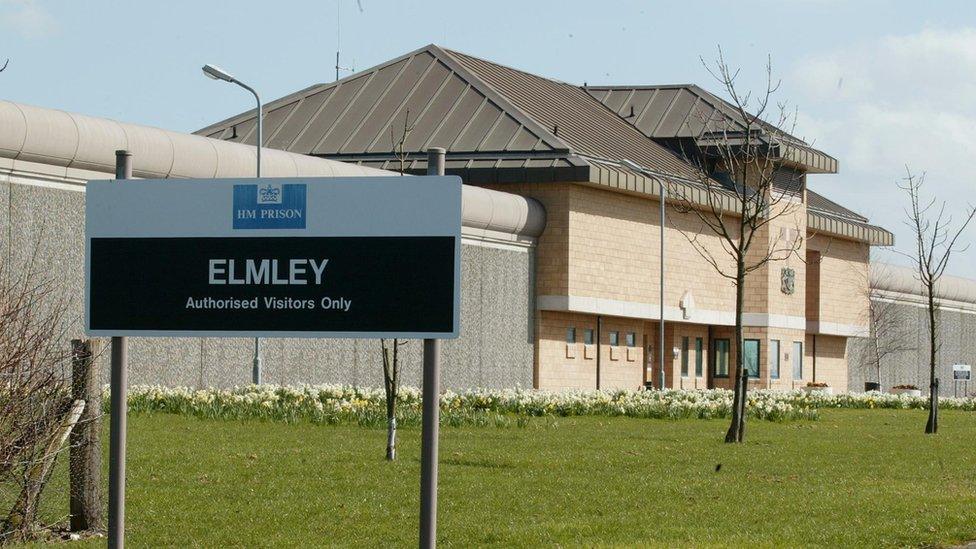Covid: Prisons having 'limited' effect on Swale infection rate
- Published

About 2,500 inmates are housed at three prisons on the Isle of Sheppey
Covid-19 cases in prisons are making only a "limited contribution" to the rising infection rate in Swale, a public health expert said.
The area of Kent has England's second highest rate at 637.7 cases per 100,000 people for the week to 15 November.
The Prison Service confirmed "a number of positive cases" at the three prisons on the Isle of Sheppey.
Prof Jackie Cassell said there are "two epidemics" in the area - one in prisons and another in the community.
Elsewhere in the borough of Swale, towns like Sheerness and Sittingbourne are also showing big increases in infection rates, she said.
This is likely because they are densely populated, with many people in jobs that can not be done from home, said Prof Cassell of Brighton and Sussex Medical School.
While cases in the three prisons - HMP Elmley, Swaleside and Standford Hill - are making a "limited contribution" to infection rates, it would be "dangerous and foolhardy" to assume it was the sole cause, she said.
"My impression is there is two epidemics with limited overlap, but the prisons look like they are something largely separate," she added.
'Meeting demanded'
Sittingbourne and Sheppey MP Gordon Henderson said there could be a number of factors at play, including prison outbreaks and a "predominance of communities of high deprivation who live in houses that are close together".
He said it was "very difficult" to get data from the Ministry of Justice, adding: "I've demanded a meeting with the prisons minster next week so I can actually try and get those figures."
Swale Borough Council acknowledged there was "speculation about where our cases have come from," but added: "The fact is we now have community transmission so we need everyone to follow the restrictions so we can stop the spread."
The Prison Service said it had taken "precautionary measures" at the three prisons following "a number of positive cases," but declined to say how many.